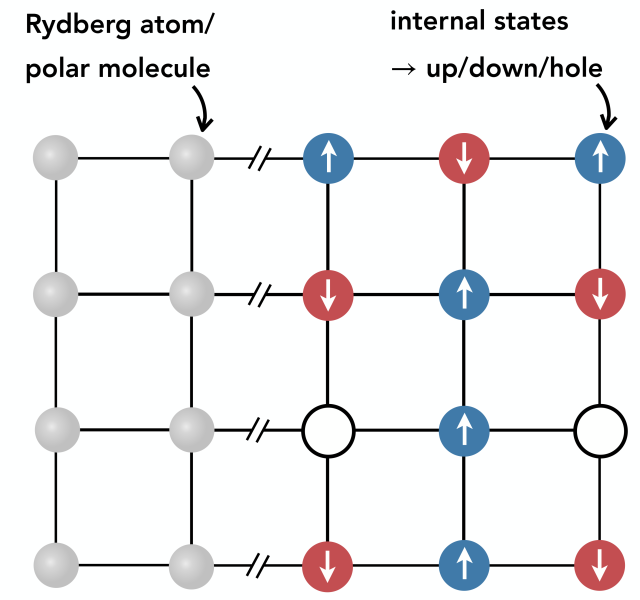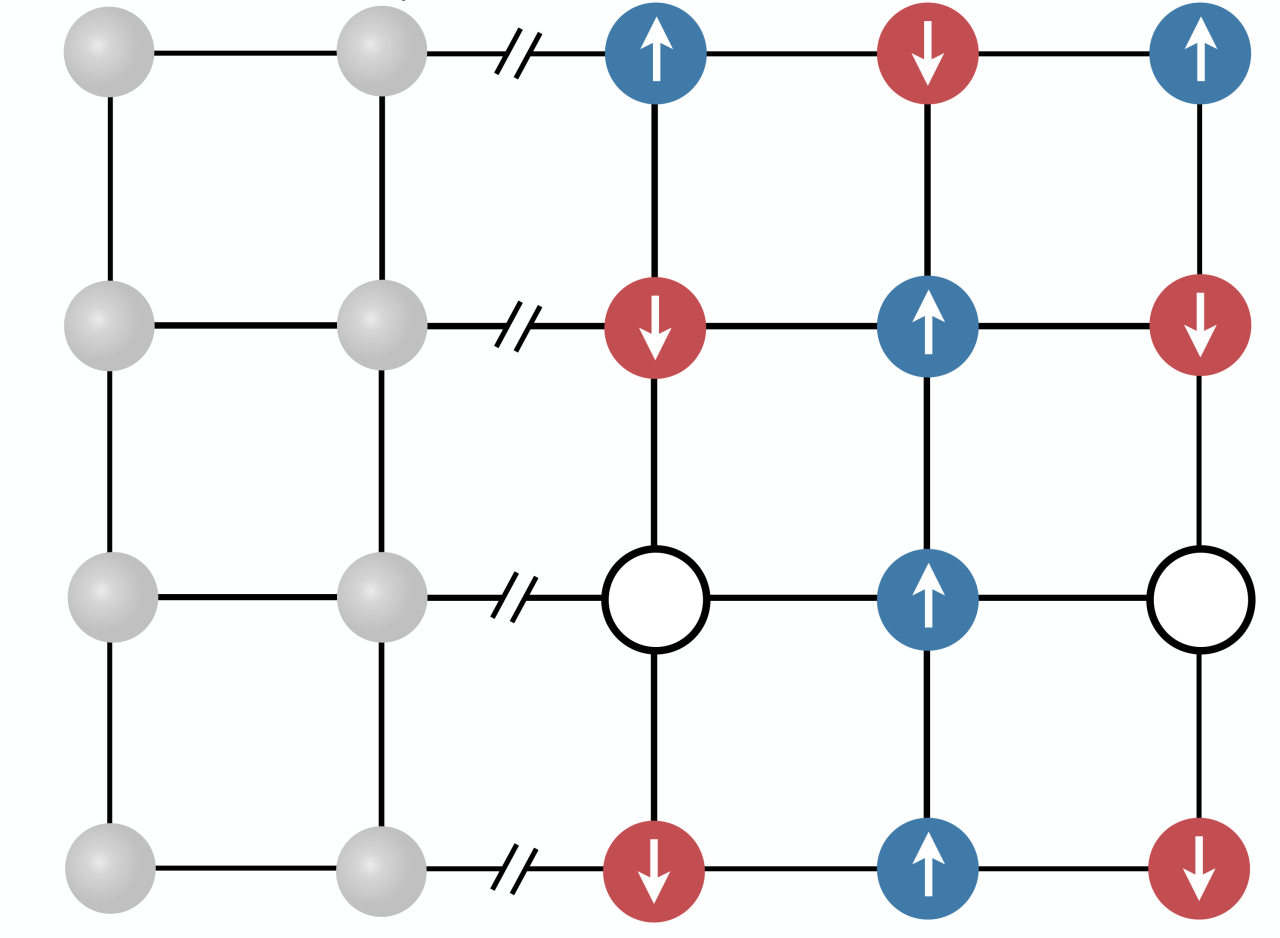25 July 2024
Doping a Quantum Magnet
In a recent publication, researchers in the groups of MCQST members, Annabelle Bohrdt at University of Regensburg and Fabian Grusdt at LMU Munich, have developed a scheme to implement doped, bosonic quantum magnets in tweezer arrays of Rydberg atoms or in cold, polar molecules. The results are featured in Physical Review Letters.
Magnetism is a ubiquitous phenomenon that we all know and experience in our everyday lives, from the kitchen magnets on your fridge to the hard drive in your computer. From a microscopic perspective, the material of our kitchen magnet is composed of "spins", which can be understood as tiny microscopic magnets, that all conspire to align in the same direction, giving rise to a net magnetic moment in the material. There are a variety of different types of magnetic orderings that arise in solid-state materials, e.g., paramagnetism/diamagnetism where a material is weakly attracted/repelled from a magnetic field, and antiferromagnetism, where the individual spins prefer to anti-align in an up-down-up-down checkerboard-type pattern.
Strongly-correlated materials, such as high-temperature superconductors and heavy-fermion compounds exhibit a rich phase diagram which includes various magnetic orderings, where the electrons carry the magnetic spin degrees-of-freedom. Superconductivity emerges when the individual electrons begin to pair up and display collective behavior. In a superconductor, the electricity can flow without resistance and hence they are of enormous technological importance. How and why the electrons pair up in a high-temperature superconductor, such as in cuprate compounds, remains an open question, but it is commonly believed that the magnetic interactions provide the pairing glue.
From a microscopic perspective, the electrons can organize in a checkerboard antiferromagnetic pattern. From this state, one can start to remove individual electrons (or charge carriers), and thereby introduce mobile vacancies distorting the antiferromagnetic ordering: a doped quantum antiferromagnet is obtained. The mobile charge carriers add a new layer of complexity to the quantum magnets, one that is incredibly difficult to describe theoretically and has been subject of intense study for 30 years. It is the competition between the charge carriers' motion and the spin order, which is believed to be crucial for the understanding of the mechanism underlying high-temperature superconductivity in cuprate compounds.
 © Quantum Many Body Group, LMU Munich
© Quantum Many Body Group, LMU Munich "First experimental realizations in collaboration with Antoine Browaeys' group from the Université Paris-Saclay and Institut d’Optique show that our proposed scheme works", says Lukas Homeier, PhD Candidate from the Quantum Many-Body Theory Group at LMU Munich and lead author of the study. "Therefore, the setup provides a novel and realistic platform to study the interplay between antiferromagnetism and mobile charge carriers. The microscopic study of such models in a quantum simulation allows us to address long-standing questions such as the magnetic pairing mechanism in doped, antiferromagnetic Mott insulators and beyond."
Publication
Antiferromagnetic Bosonic t-J Models and Their Quantum Simulation in Tweezer Arrays
L. Homeier, T. J. Harris, T. Blatz, S.Geier, S. Hollerith, U.Schollwöck, F. Grusdt, and A. Bohrdt
Phys. Rev. Lett. 132, 230401
DOI:
https://doi.org/10.1103/PhysRevLett.132.230401
Contact
Lukas Homeier
Quantum Many Body Group
LMU Munich, Theoretical Nanophysics
lukas.homeier[at]physik.uni-muenchen.de
